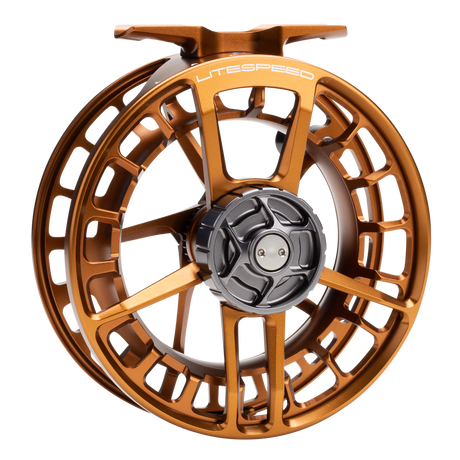LAMSON
Waterworks was formed in 1996 when fishermen who happened to be product designers figured a better way to release a fly-caught fish. The status quo, the hemostat, wasn't good for the fish or the fly. Their solution was an innovative tool that allowed a fish to be released without handling, and the fly to remain intact. Named after their hometown in Idaho, they called the tool the Ketchum Release.
Those same fishermen were also bicycle enthusiasts and prior to forming Waterworks, had honed their skills in the world of high performance cycling, creating and patenting cutting-edge components and mountain bike suspension technology. Eventually turning their focus to the fly reel was a logical thing to do: Reels were, essentially, a wheel on a frame.
Fly reels were heavy, overly complex and unreliable. They had slow retrieve rates. They caused line to coil and drag tension as line fed out. The designers wondered, ``what would the perfect fly reel look like?`` The ULA (ultra large arbor), the power arm frame, the conical sealed drag, the integrated counterbalance — all were the results of this early work and formed the basis of an enduring architecture.
In 1998, Waterworks acquired Lamson and, along with Waterworks Force reels, now had two brands sharing the core technology and design ethos of simplicity and function-driven styling. The line-up of reels has radiated into specialized niches over time: two handed, salt water, super-arbor, and rugged environments. The pursuit of inspired design and solid engineering has driven Waterworks-Lamson's fly reel innovation for two decades, with no end in sight.










